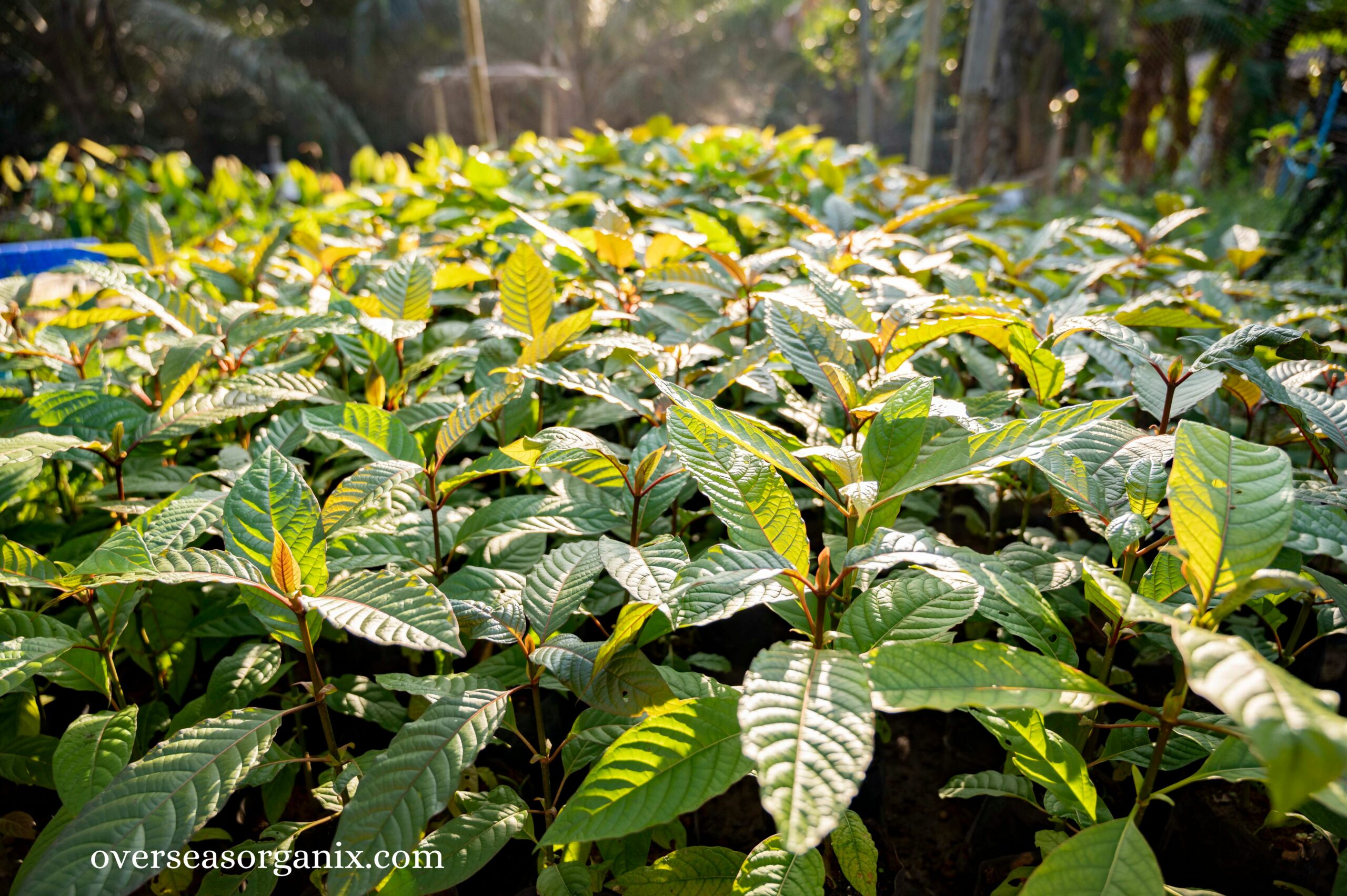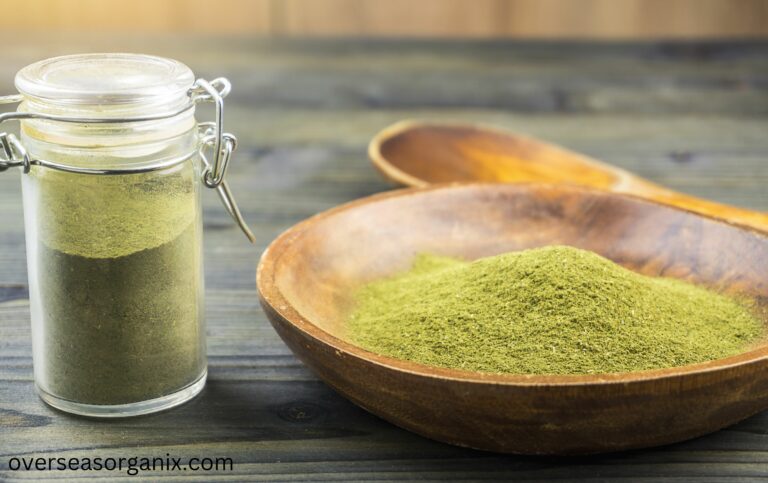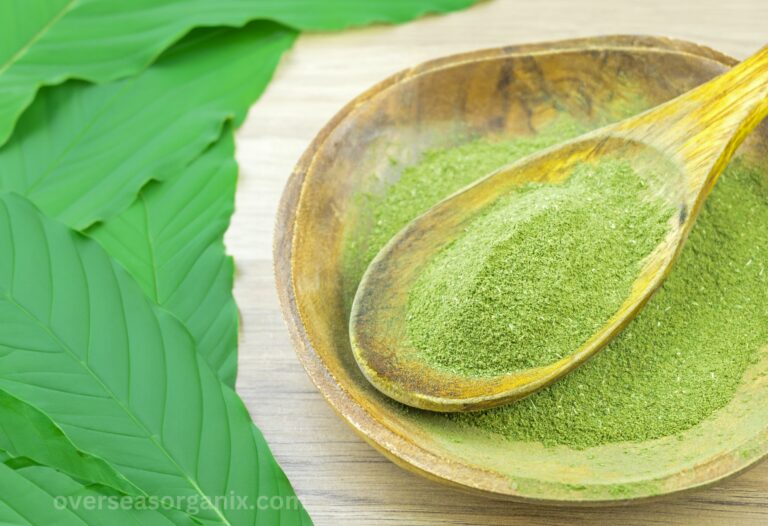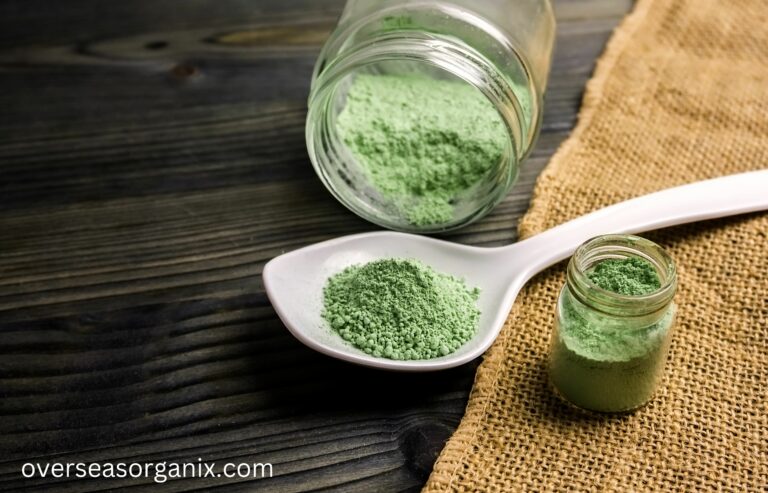No products in the cart.
Mysteries of Kratom Plant: Origins, and Uses
In recent years, the Kratom plant has gained significant attention for its potential medicinal properties and controversial status in various parts of the world. Kratom, scientifically known as Mitragyna speciosa, is a tropical evergreen tree native to Southeast Asia, particularly in countries like Thailand, Malaysia, Indonesia, and Papua New Guinea. It belongs to the coffee family, Rubiaceae. Kratom have been used for centuries for their stimulant and medicinal properties.
History and Origin
The history of Kratom Plant traces back centuries, with indigenous communities in Southeast Asia utilizing its leaves for various purposes. Traditional use includes chewing the leaves to alleviate fatigue, increase energy levels, and manage pain.
Botanical Characteristics of Kratom Plant
Leaves
Kratom leaves are glossy and dark green in color, with a distinctive shape characterized by an oval and pointed tip. The leaves contain compounds called alkaloids, including mitragynine and 7-hydroxymitragynine, which are responsible for their effects on the body.
Alkaloids
These alkaloids interact with opioid receptors in the brain, producing a range of effects that can vary depending on the dosage and individual sensitivity.
Traditional Uses
In Southeast Asia, Kratom has been traditionally used for its stimulating and analgesic properties. Workers in fields would chew Kratom leaves to increase stamina and productivity, similar to the use of coca leaves in South America.
Modern Consumption
Forms of Consumption
Today, Kratom is consumed in various forms, including dried leaves, powder, capsules, and extracts. Each form has its own onset of effects and duration.
Dosage Guidelines
Dosage guidelines vary depending on factors such as individual tolerance, body weight, and the desired effects. It’s essential to start with a low dose and gradually increase to avoid adverse reactions.
Effects on the Body
Kratom Plant exhibits a range of effects on the body, which can be categorized based on dosage levels.
Stimulant Properties
At lower doses, Kratom Plant acts as a stimulant, inducing feelings of alertness, energy, and sociability.
Pain Relief
Moderate doses of Kratom Plant have analgesic properties, providing relief from chronic pain conditions such as arthritis and fibromyalgia.
Sedative Effects
At higher doses, Kratom Plant produces sedative effects, promoting relaxation and potentially aiding in the management of anxiety and insomnia.
Legal Status
The legal status of the Kratom varies worldwide. While it remains legal in many countries, including the United States, several countries have banned its sale and possession due to safety concerns and the potential for abuse.
Controversies Surrounding Kratom
Safety Concerns
Critics argue that Kratom poses risks of addiction, dependence, and adverse effects, including nausea, vomiting, and respiratory depression.
Regulatory Issues
Regulatory bodies have grappled with the classification of Kratom , debating whether it should be considered a controlled substance or regulated as a dietary supplement.
Research and Potential Benefits
Despite controversies, ongoing research suggests that Kratom Plant may have potential therapeutic benefits, including its use as an alternative to opioids for pain management and its potential as an antidepressant and anxiolytic.
Addiction and Withdrawal
Long-term use of Kratom can lead to dependence, with users experiencing withdrawal symptoms upon cessation. Proper education and regulation are essential to minimize the risks associated with Kratom use.
Guidelines for Safe Use
To minimize risks, it’s crucial to adhere to safe usage guidelines, including starting with a low dose, avoiding frequent use, and being aware of potential drug interactions.
Kratom and Mental Health
Some individuals use the Kratom as a form of self-medication for mental health conditions such as depression, anxiety and PTSD. However, its efficacy and safety for these purposes remain subjects of debate among researchers and healthcare professionals.
Personal Experiences
Many individuals have shared their experiences with the Kratom, highlighting its potential benefits for managing chronic pain, improving mood, and enhancing productivity. However, anecdotal evidence should be interpreted with caution, and more rigorous scientific studies are needed to validate these claims.
Conclusion
In conclusion, the Kratom Plant remains a topic of intrigue and controversy in the realm of natural remedies. While it shows promise for its analgesic and mood-altering effects, it also poses risks of addiction and adverse reactions. As research continues to unfold, it’s essential to approach Kratom use with caution, emphasizing responsible consumption and adherence to safety guidelines.
Frequently Asked Questions (FAQs)
Yes, Kratom is legal in most states, although some have imposed restrictions or outright bans.
Common side effects include nausea, vomiting, dizziness, and constipation. Extended usage can result in dependency and the emergence of withdrawal symptoms over time.
Some individuals claim that Kratom Plant can alleviate opioid withdrawal symptoms, but more research is needed to support these claims.
Yes, Kratom can be addictive, especially with prolonged and frequent use. Users may develop tolerance and dependence over time.
It’s essential to start with a low dose and avoid frequent use to minimize the risk of adverse effects and dependence. Consultation with a healthcare professional is advised, especially if you have underlying medical conditions or are taking other medications.








